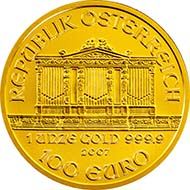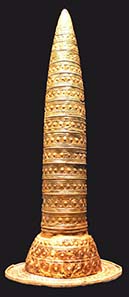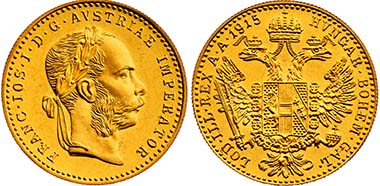Not all gold is created equal – everything one has to know about gold alloys
by courtesy of the Austrian Mint
April 22, 2010 – All is not gold that is in it to paraphrase a well-known saying in regard to all the kinds of metal we are used to call gold. Pure gold as the “Vienna Philharmonic” for example consists of does not necessarily come with all coins and jewellery. In most cases the yellow metal labelled gold rather is an alloy containing other metals. Alloying means a “thinning” of the gold as well as a strengthening of that noble metal since pure gold is relatively soft.
The classic gold alloy – used for jewellery, for example – consists of gold, silver and copper. This mixture derived from nature where such compounds exist, too. Other elements in small amounts such as zinc, tin or cadmium lower the melting point. Platinum, nickel or copper have a positive effect on the temper. A special temper is achieved with a fineness of around 585/1000. This is one reason why high-quality jewellery is normally made of such an alloy. In the Middle East where more people than in this country regard jewellery also as an investment, a gold content of 833 to 916 is preferred.
Gold always fascinated people – this object was made in the Bronze Age, during 1000 and 800 B. C. Photograph Andreas Praefcke / Wikipedia.
Each alloy had its own colour: red gold consists of gold and copper and sometimes small amounts of silver, too. Yellow gold normally has a high amount of fine gold with additions of silver and copper. Green gold, i.e. gold with a greenish colour, is achieved by a ratio of gold and silver of roughly 1:1. White gold is a general term for alloys that reduce the golden hue considerably: the range covers the rather inexpensive alloy with nickel or a mixture with a high silver content to a costly alloy with platinum.
How to distinguish the single kinds of gold according to their value? Either by carat (ct) or by the content of fine gold per 1000 parts (see box).
Experts call the last mentioned substance 333 gold (whether that still justifies the label gold is contentious). An exception in yet another regard is the ducat gold with its ratio of 986/1000.
Up to the present day, ducats can be bought at the Austrian Mint.
Until today, the AUSTRIAN MINT restrikes the 1 ducat as well as the 4 ducat coins using ducat gold. Collector’s coins like the ones from the current series “Celebrated Physicians of Austria” are of this extraordinary fineness.
The gold price is set in London twice a day. This is the so-called London pm fixing the gold price all over the world follows. The current dollar rate is important, too, because gold is traded in US Dollars. Recently, the gold price has surged to new highs which again proved gold – in contrast to other investment vehicles – a stable asset.
| FINE GOLD CONTENT PER 1000 PARTS 24 ct = 999/1000 (this is regarded pure gold) 22 ct = 916/1000 20 ct = 833/1000 18 ct = 750/1000 14 ct = 585/1000 10 ct = 417/1000 9 ct = 375/1000 8 ct = 333/1000 |







